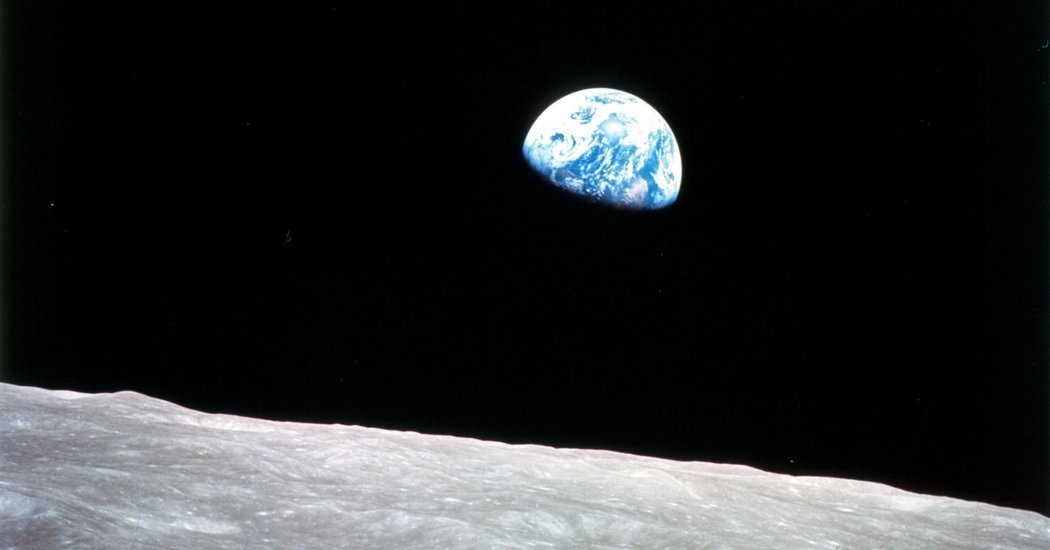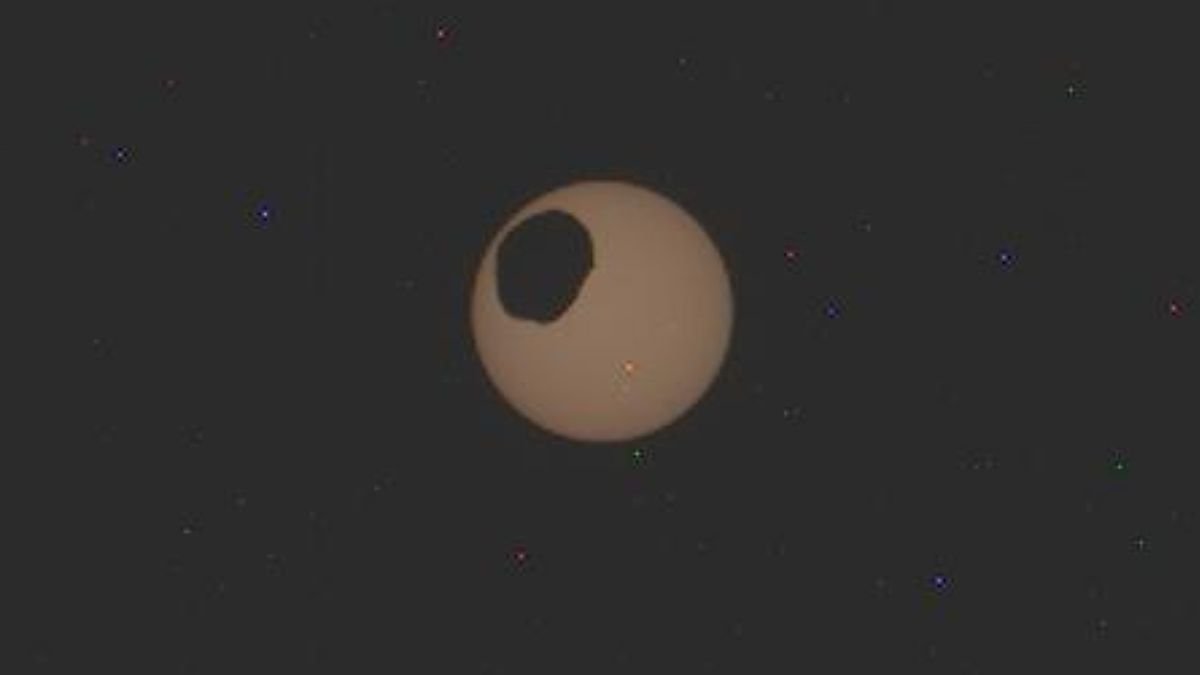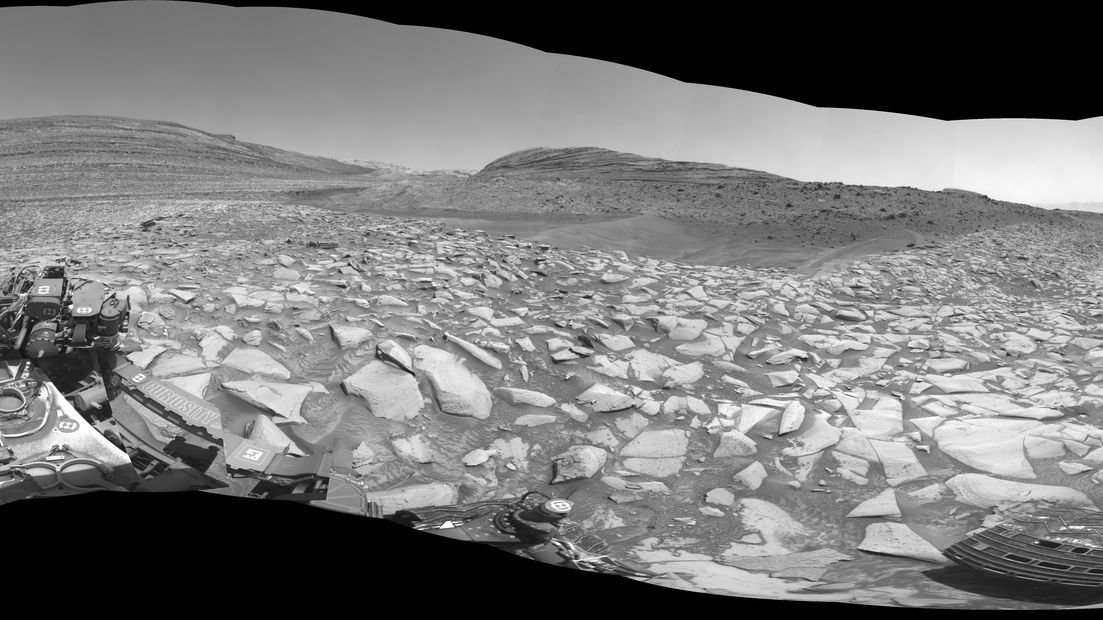Maj. William A. Anders, who flew on the first manned space mission to orbit the moon, the Apollo 8 “Genesis Flight” of Christmas Eve 1968, and took the color photograph “Earthrise” credited with inspiring the modern environmental movement, died on Friday when a small plane he was piloting alone dove into the water near Roche Harbor, Wa., northwest of Seattle. He was 90.
His son Greg confirmed his death.
Major Anders, along with Col. Frank Borman, both of the Air Force, and Capt. James A. Lovell Jr. of the Navy, was part of the first group of spacemen to leave the bounds of Earth’s orbit. During their mission, they took photos and motion pictures of the lunar surface in preparation for the Apollo 11 fight, when men first stepped on the moon, and they were the first astronauts sent aloft by a giant Saturn V rocket.
Beyond those tremendous milestones, their mission was viewed as briefly reviving the spirits of an America stunned by rising casualties in the Vietnam War, the assassinations of the Rev. Dr. Martin Luther King Jr. and Robert F. Kennedy, and tumultuous antiwar protests and racial disturbances.

On Christmas Eve, during their 10 orbits of the moon, the three astronauts, whose movements were telecast to millions around the world, took photos of Earth as it rose over the lunar horizon, appearing as a blue marble amid the blackness of the heavens. But only Major Anders, who oversaw their spacecraft’s electronic and communications systems, shot color film.
His photo shook the world. Known as “Earthrise,” it was reproduced in a 1969 postage stamp bearing the words, “In the beginning God…” It was an inspiration for the first Earth Day, in 1970, and it appeared on the cover of Life magazine’s 2003 book “100 Photographs That Changed the World.” Just moments before Major Anders began snapping away, the astronauts could be heard, as captured by the onboard recorder, expressing their awe over what they saw:
Anders: Oh my God! Look at that picture over there. Here’s the Earth coming up. Wow, that’s pretty.
Borman: [chuckle] Hey, don’t take that, it’s not scheduled.
Anders: [laughter] “You got a color film, Jim? Hand me that roll of color quick, would you…
Lovell: “Oh man, that’s great.”
Decades later, in a 2015 interview with Forbes magazine, Major Anders said of Earthrise, “The view points out the beauty of Earth, and its fragility. It helped kick start the environmental movement.”
But he said he was surprised by how much the public’s memory of the figures behind that photo had faded. “It’s curious to me that the press and people on the ground have kind of forgotten our history-making voyage, and what’s symbolic of the flight now is the ‘Earthrise’ picture,” he said. “Here we came all the way to the moon to discover Earth.”
In closing out their Christmas Eve telecast, the Apollo 8 astronauts read from the first passage in the Book of Genesis.
Major Anders was the first reader: “In the beginning God created the heaven and the Earth. And the Earth was without form, and void; and darkness was upon the face of the deep.”
William Alison Anders was born on Oct. 17, 1933, in Hong Kong, where he was living with his mother, Muriel Adams Anders, while his father, Lt. Arthur Anders, a career Navy man, was serving as an officer on the gunboat Panay on patrol along China’s Yangtze River.
After a stint in Annapolis, Md., the family returned to China, with his father posted aboard the Panay, once more, as the executive officer, or second in command. But after a Japanese attack in Beijing in July 1937, prompting the start of the Sino-Japanese War, Bill and his mother fled to the Philippines.
In December, while the Panay was carrying out the evacuation of Americans from China, Japanese planes bombed and strafed the boat.
Its captain was severely injured and Lieutenant Anders, who was also wounded, nevertheless took command and ordered the boat’s machine gunners to fire at the Japanese planes. He also oversaw the boat’s evacuation before it sank, for which he received the Navy Cross, the service’s highest award for valor after the Medal of Honor.
The episode, which became known as the Panay Incident, heightened tensions between the United States and Japan, which only four years later, would attack Pearl Harbor, drawing America into World War II.
Bill Anders returned to the United States, attended Grossmont High School in San Diego County, Calif., and became fascinated by tales of world famous explorations. Following the path his father pursued, he entered the Naval Academy and graduated in 1955, planning to become a pilot. He obtained a commission in the Air Force, viewing it as more attuned than the Navy to breakthroughs in aeronautical science.
He received his pilot wings in 1956 and served as a fighter pilot with interceptor squadrons in California and Iceland tracking Soviet heavy bombers that were challenging America’s air defense borders. In 1962, he received a master’s degree in nuclear engineering from the U.S. Air Force Institute of Technology at Wright-Patterson Air Force Base in Ohio. A year later, he joined the third class of astronauts at NASA, although he lacked experience as a test pilot, a traditional route to flying for the agency.
While at NASA, Major Anders became a specialist in space radiation, whose effects were considered to be a potential hazard for future astronauts. He also trained in a module that would be used to carry astronauts from a moon-orbiting capsule to the lunar surface, the future lunar lander.
Apollo 8 was designed to orbit the Earth with the module, which Major Anders would flight-test. But its development was delayed, so the mission was reprogrammed as a moon orbit, without the module, a premature and risky bid to beat the Russians in circling the lunar surface. The mission was a huge success and its astronauts were hailed at parades in New York, Chicago and Washington and appeared before a joint session of Congress.
In 1969, Major Anders retired from NASA and the Air Force, after accepting a position as executive secretary of the National Aeronautics and Space Council, a presidential advisory unit.
He was later a member of the Atomic Energy Commission, the first chairman of the Nuclear Regulatory Commission and Ambassador to Norway. After leaving government service, he held executive posts with General Electric and Textron and was chairman and chief executive officer of General Dynamics, a major defense contractor.
He retired from Air Force Reserves in 1988 as a major general.
He is survived by his wife, Valerie (Hoard) Anders; his sons Alan, Glen, Greg and Eric; and his daughters, Gayle and Diana.
Major Anders lived in Washington State, where he and his wife founded a flight museum in 1996.
Although 12 Americans would walk on the moon, Mr. Anders was not among them, with Apollo 8 his only spaceflight. But he never appeared bothered by this. It seemed that from his vantage point in orbit, the moon’s topography was uninspiring in contrast to the beauty of home he captured in “Earthrise.”
“I use the unpoetic description ‘dirty beach,’” he said of the moon’s gravely surface, adding, “you can imagine how the poets give me hell.”
Orlando Mayorquín contributed reporting and Susan C. Beachy contributed research.










